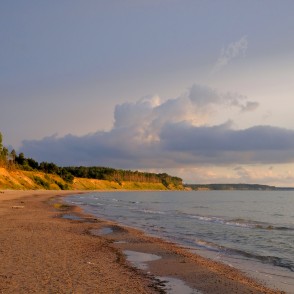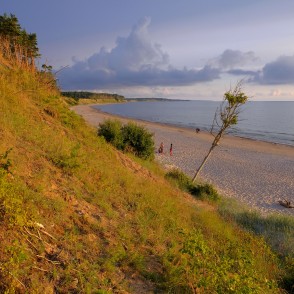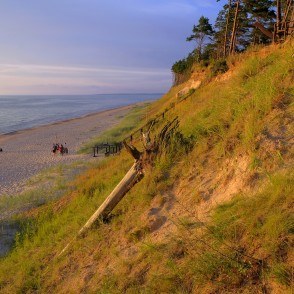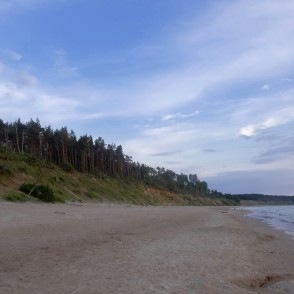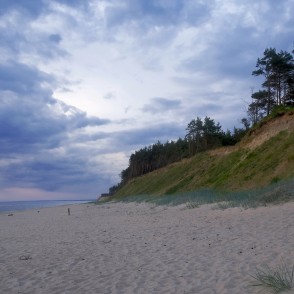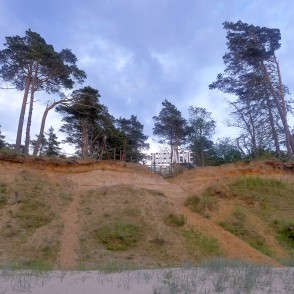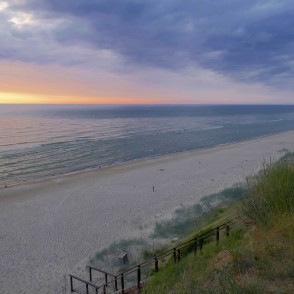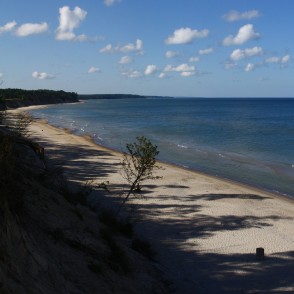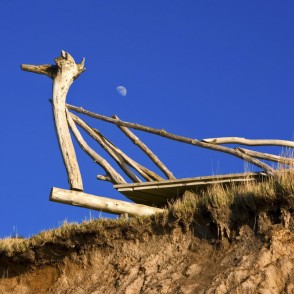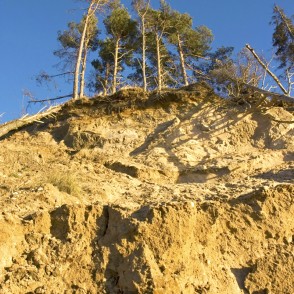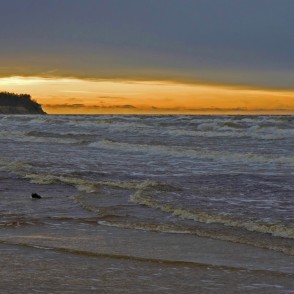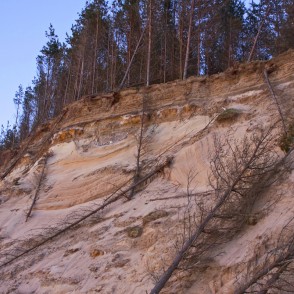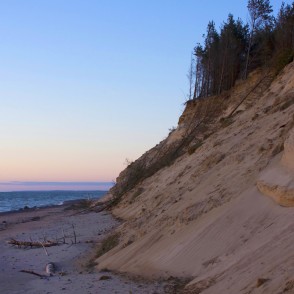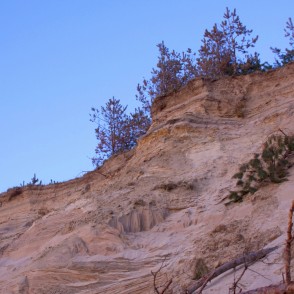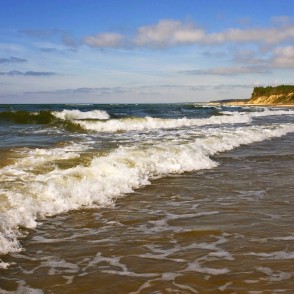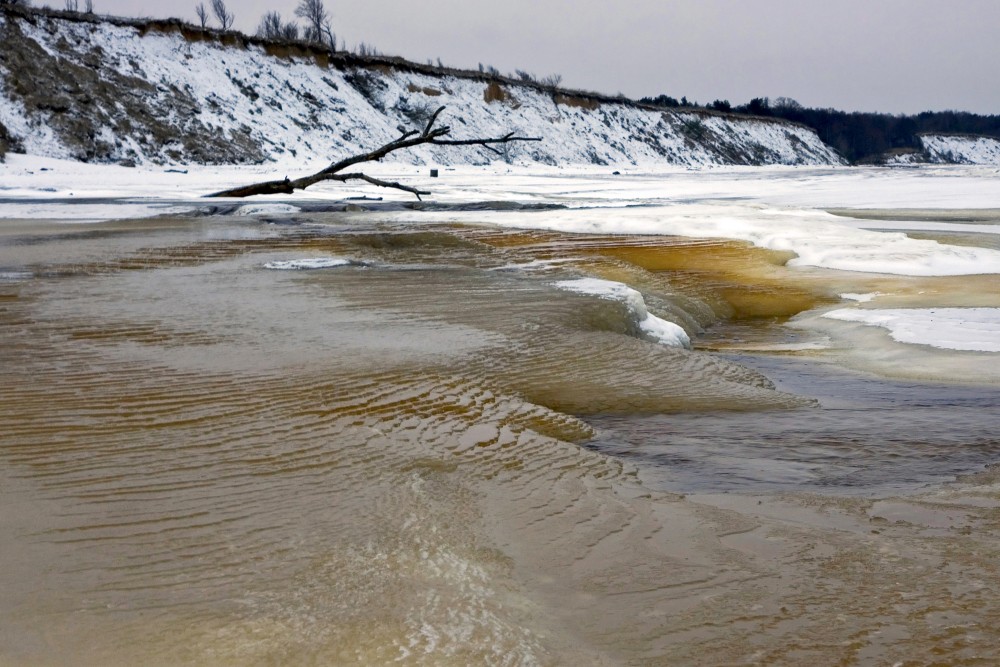The Jurkalne Bluffs is one of the most picturesque parts of Latvia’s seashore, with a quiet beach untouched by civilisation and bluffs of up to 20 metres high.
Bluffs
The bluffs in Jurkalne belong to the landslide-landfall type. The largest amount of erosion can be observed in Jurkalne - exactly from this area as much has been washed out as in Latvia as a whole. The stairs that lead from the top of the bluffs to the beach have been restored several times, due to the shore receding after powerful storms. It has been noticed that the shore can recede as fast as a few metres a year.
According to specialists, this is a perfectly suitable place for paragliding.
Recreation in Jurkalne
Jurkalne offers ample opportunities for spending your holidays — either quietly in front of the see, or more actively: this is an excellent location for paragliding, windsurfing, kiteboarding and paddle boarding.
www.latvia.travel/en
The steep shores of Jūrkalne are one of the most popular tourist destinations in Kurzeme. The shores are up to 20 m high, washed by the waves and mostly made of sand and narrow bands of pebbles and stones. Opposite the centre of Jūrkalne is a viewing platform and a set of stairs that lead to the sea. The shore continues in the direction of Pāvilosta and Ventspils.
www.celotajs.lv/en
SEA CLIFF
On coasts where natural or anthropogenic (ports with hydrotechnical structures) processes cause sea to move onto high lifted coast lines by washing down them sistematically during storms seashore cliffs are formed. On seashore cliffs sedimentary rocks of different genesis (glacial, marine, eolic) or harder, more difficult to erode bedrocks are uncovered. On Latvian seashore cliffs only Devonian sandstones, clays and aleirolites are present. On Latvian shorelines seashore cliffs are in angle from 30 to 70 degrees. Most spectacular and most scenic as well as most interesting geologically are high and midle high seashore cliffs with complicated geological structure. They are formed in places where sea is eroding shore line systematically in period of thousands of years gradually moving onto the shore land. Most significant and most typical is seashore cliffs zone that starts from Pavilosta and including Ulmale and Jurkalne stretches to Sarnate (approximately 24 km) and with some interuptions even to the Uzava lighthouse. Continuous, 10 to 15 meters (maximum 20) high seashore cliff is split by walleys of small rivers (Riva, Enava, Muizupite) and short V-type ravines. In Jurkalne active landslide- landslip type seashore cliff can be found. Biggest coast erosion can also be found near Jurkalne. From vicinity of Jurkalne the same amount of shore line is washed out as from all coast line in Latvia totally.

